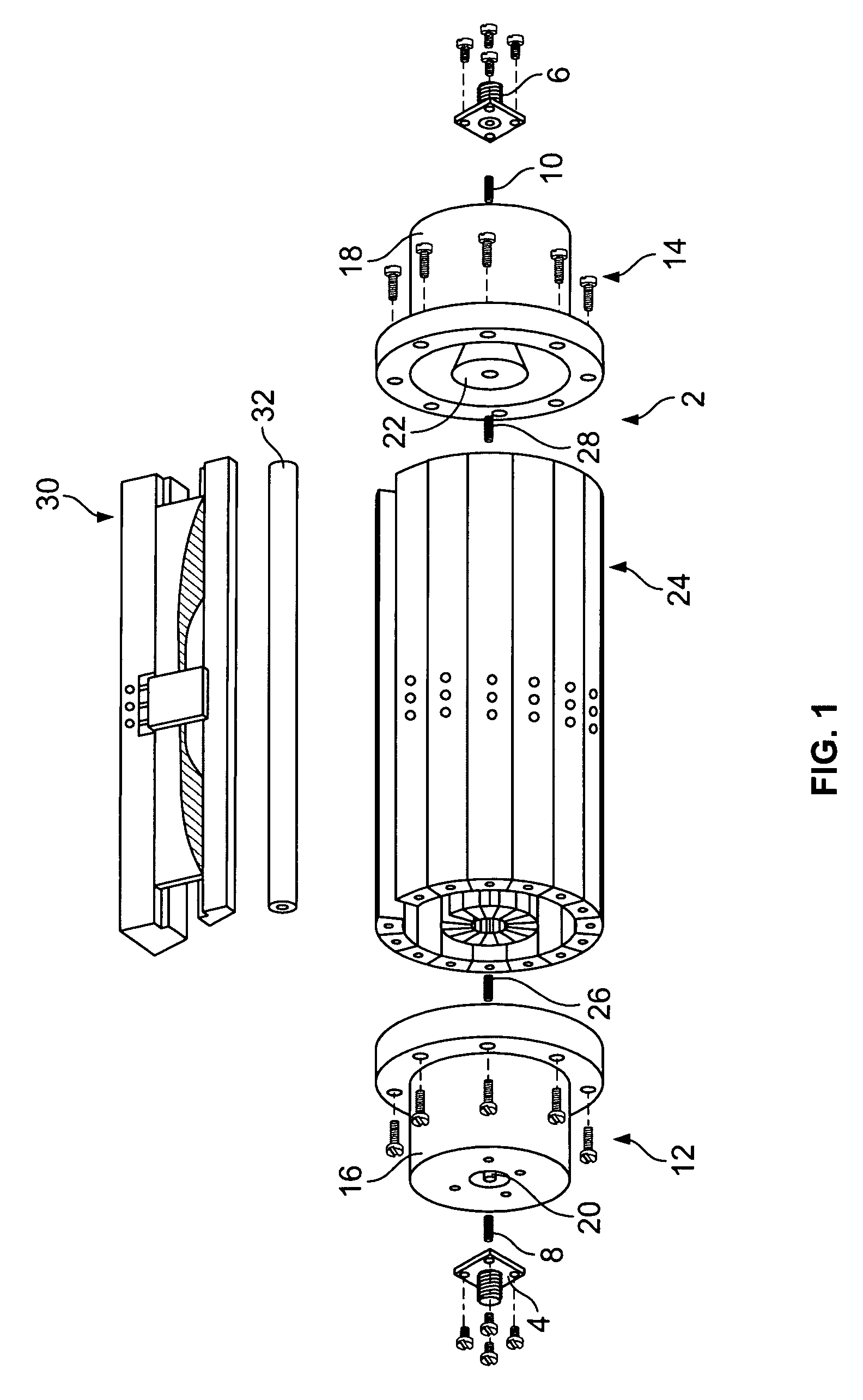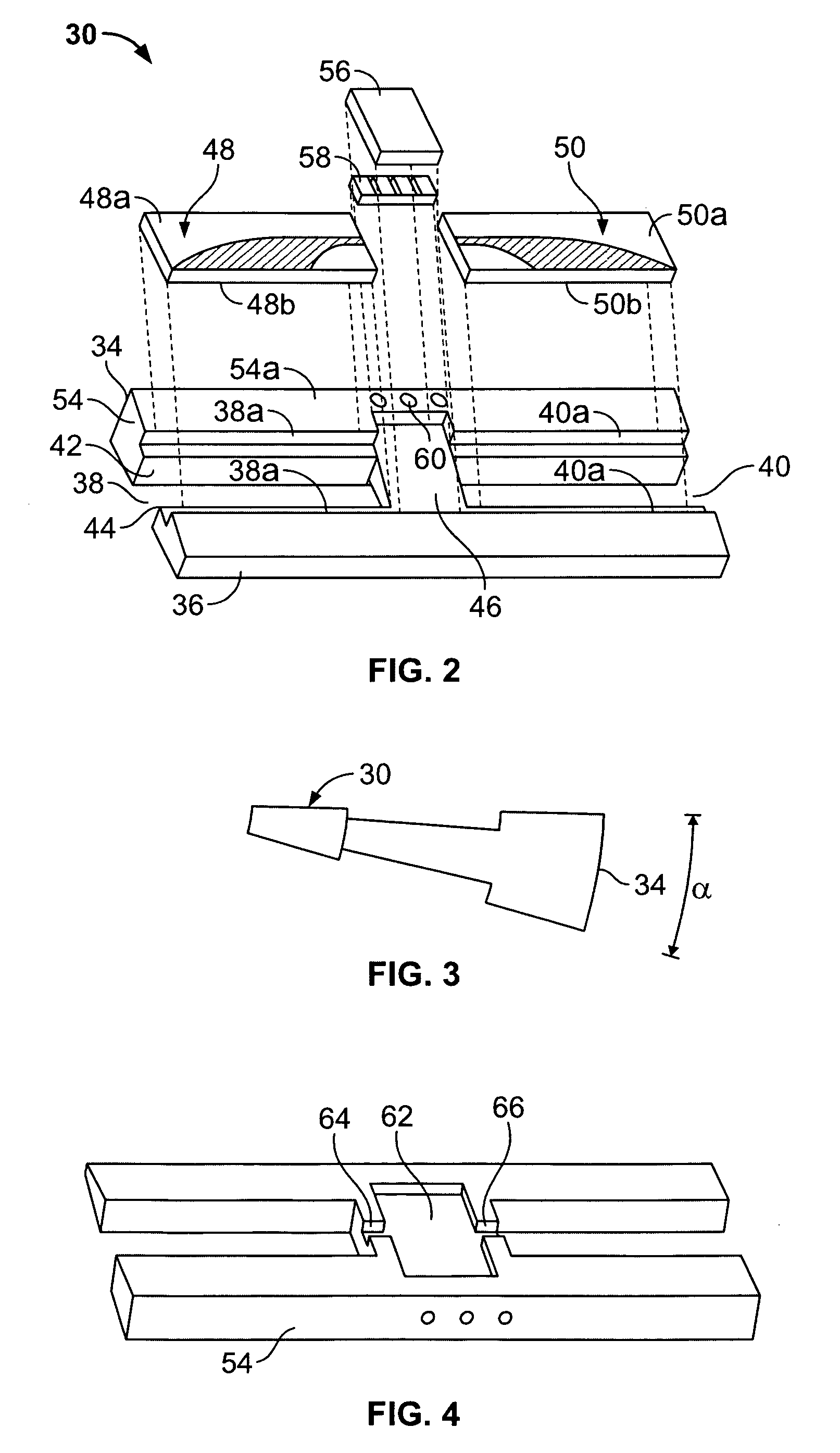Broadband power combining device using antipodal finline structure
a technology of antipodal fins and combining devices, which is applied in coupling devices, waveguides, electrical apparatus, etc., can solve the problems of short life time, poor linearity, and high cost, and achieve the effect of minimizing both thermal resistance from chip to carrier and rf parasitic noise, reducing system complexity, and maximizing combining efficiency
- Summary
- Abstract
- Description
- Claims
- Application Information
AI Technical Summary
Benefits of technology
Problems solved by technology
Method used
Image
Examples
Embodiment Construction
[0045]In accordance with the invention, a broadband spatial power combining device using longitudinally parallel, stacked wedge shaped trays is provided. Antipodal finline structures are mounted on each tray. When the trays are stacked together to form a coaxial waveguide, the antipodal finline structures are disposed into the waveguide and form a dividing array at the input and a combining array at the output. With the use of antipodal finline arrays inside the coaxial waveguide for power dividing and combining, a broadband frequency response covering the range of about 2 to 20 GHz is realized. The antipodal finline structure is easy to manufacture using conventional printed circuit board (PCB) processes. It also enables easy integration with COTS (commercial off-the-shelf) MMICs. Further, the division of a coaxial waveguide into wedge-shaped trays enables simplified DC biasing and provides good thermal management.
[0046]As illustrated in FIG. 1, in the spatial power combining devic...
PUM
 Login to View More
Login to View More Abstract
Description
Claims
Application Information
 Login to View More
Login to View More - R&D
- Intellectual Property
- Life Sciences
- Materials
- Tech Scout
- Unparalleled Data Quality
- Higher Quality Content
- 60% Fewer Hallucinations
Browse by: Latest US Patents, China's latest patents, Technical Efficacy Thesaurus, Application Domain, Technology Topic, Popular Technical Reports.
© 2025 PatSnap. All rights reserved.Legal|Privacy policy|Modern Slavery Act Transparency Statement|Sitemap|About US| Contact US: help@patsnap.com



